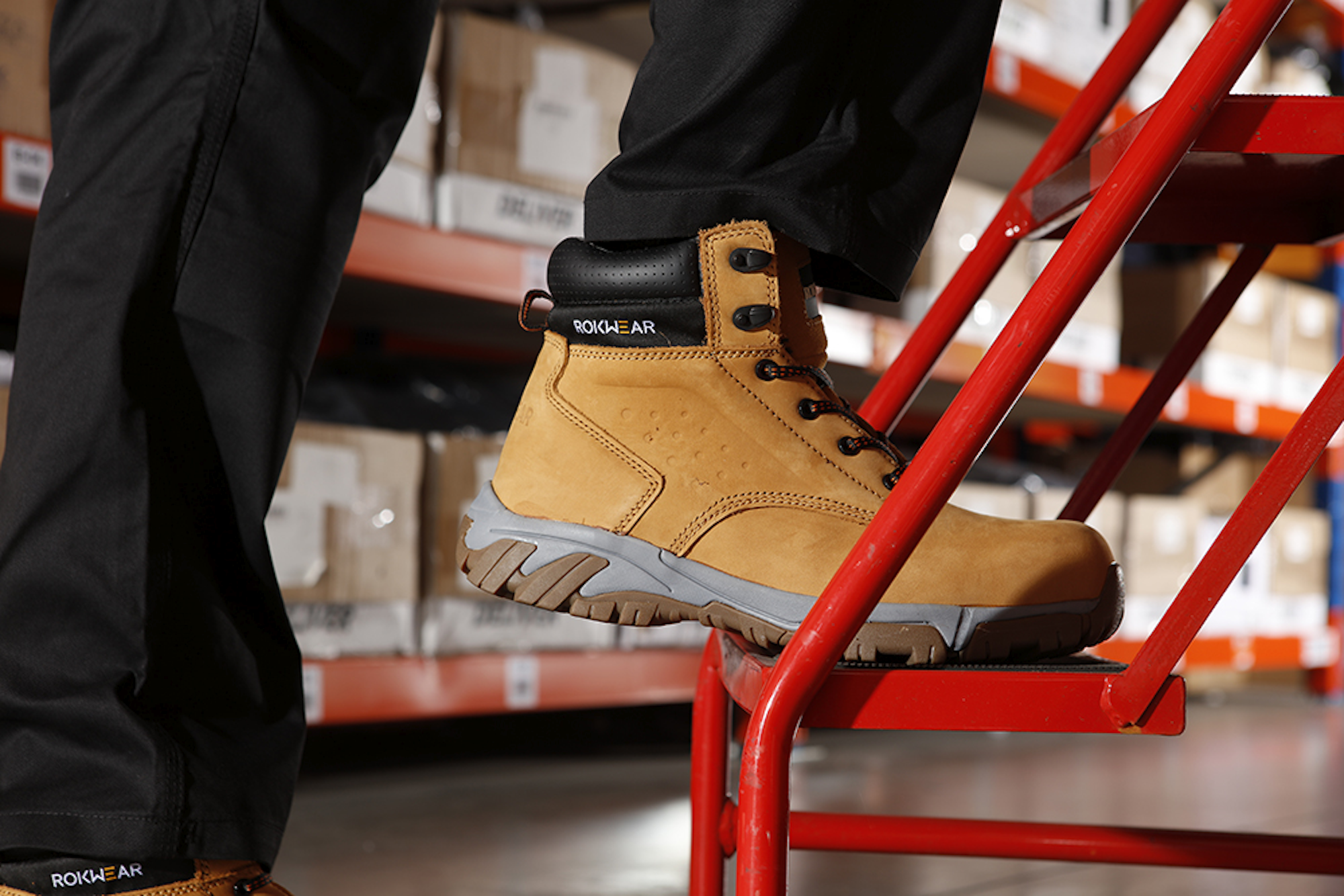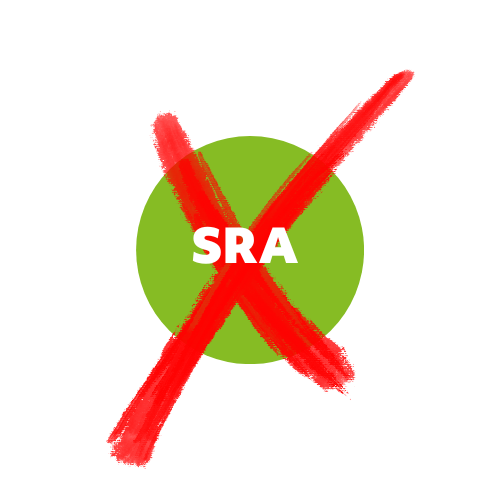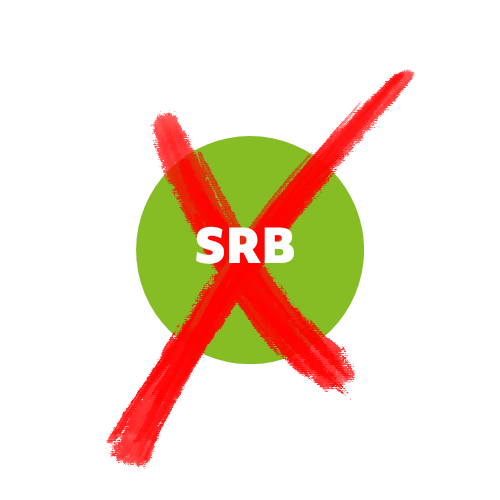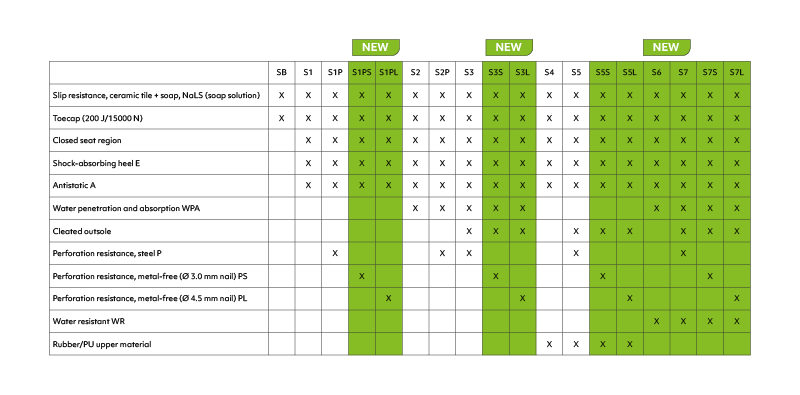Navigating the Changes in Safety Footwear Standards: A Guide to EN ISO 20345:2022
4 minute read

After being in place for over a decade, the safety standards for footwear have transitioned from EN ISO 20345:2011 into the new revised standard EN ISO 20345:2022.
For the most part, the standard has largely remained consistent with its 2011 version, with no alterations affecting the safety level of any protective claims included.
Instead, the changes bring forth new classifications, revised testing methodologies, and updated markings, prompting many to question how these alterations will affect them and their teams.
Rest assured, we've simplified these classifications to provide you with a clearer understanding of each rating and how to easily identify which safety shoe is best suited to the demands of your role. So, with that…
WHAT ARE THE KEY CHANGES TO THE STANDARD?
- Modifications in marking
- Addition of new protective claims
- Improvement in test methods
WHY HAVE THE STANDARDS CHANGED?
The shift from EN ISO 20345:2011 to ISO 20345:2022 signifies a progression towards enhanced safety in footwear. Noteworthy changes include the new key identifiers for slip resistance. These modifications aim to align safety footwear standards with evolving industry practices and address emerging workplace hazards more effectively.
SAYING FAREWELL TO THE OLD SLIP RESISTANCE RATINGS!
 |
 |
 |
For years, the SRA, SRB, and SRC classifications have served as benchmarks for assessing the slip resistance of footwear. However, these markings will no longer exist.
This is because slip-resistance is such a crucial feature for safety, that it is now considered as mandatory and therefore will not carry a mark. It is important to note that your current safety boots may still feature the familiar slip codes, but as more safety footwear undergoes the new testing procedures, these markings will gradually phase out.
Despite this, it's essential to understand that this change doesn't imply a lack of slip testing. Manufacturers will have the option to conduct additional slip tests on their safety footwear. If successful, the footwear will display the SR symbol, indicating compliance with the updated slip resistance standards.
NEW WATER RESISTANT SYMBOLS
Diving deeper, other changes to the classification include water resistance.
The old symbol, WRU (water-resistant uppers) is now being replaced to WPA (water penetration and absorption) but the test itself has not changed.
SCUFF CAP ABRAISION
To assess the durability of the scuff cap in protecting the toecap, a new test was introduced to the standards.
During this testing, the footwear is subjected to controlled abrasion cycles, this is to simulate real-world wear and tear that would be encountered during various industrial environments. If the scuff cap passes the test after 1,000 abrasion cycles, this will be marked with an SC symbol.
LADDER GRIP TEST
The ladder grip test is an additional test added; a standardised assessment conducted to evaluate the slip resistance of footwear for the use on ladders. It assesses the area between the heel and forepart of the boot below the arch. The symbol LG indicates passing the test.
S6 AND S7
Two short new cut codes have been included into the standard.
S6 = the footwear meets the requirements of class S2 and is also waterproof (WR).
S7 = the footwear meets the requirements of class S3 and is also waterproof (WR).
NEW CODES FOR PUNCTURE RESISTANCE
And finally, an update to puncture resistance. In the previous standard, all perforation-resistant insert, or nail guards, are marked with the symbol P. This test was carried out with a 4.5mm nail.
However, for the new standard, the testing remains unchanged, instead there are new markings differentiated according to the diameter of the nail test below:
PS = nail used in the test Ø 3.0 mm (Small)
PL = nail used in the test Ø 4.5 mm (Large)
The protection markings for perforation-resistant insert can be, for example:
A FULL BREAKDOWN OF THE OLD VS NEW:

In essence, the transition to EN ISO 20345:2022 represents a commitment to continual improvement in safety standards, providing both employers and workers with greater confidence in the protective qualities of their footwear.
By embracing these changes and understanding these revised standards, individuals can make more informed choices to safeguard their well-being in the workplace.
Now that you're aware of the updated standard, don't compromise on protection. Shop now for all your safety footwear needs and ensure you're equipped with top-quality gear that meets the latest EN ISO 20345:2022 standards. Your safety is our priority.